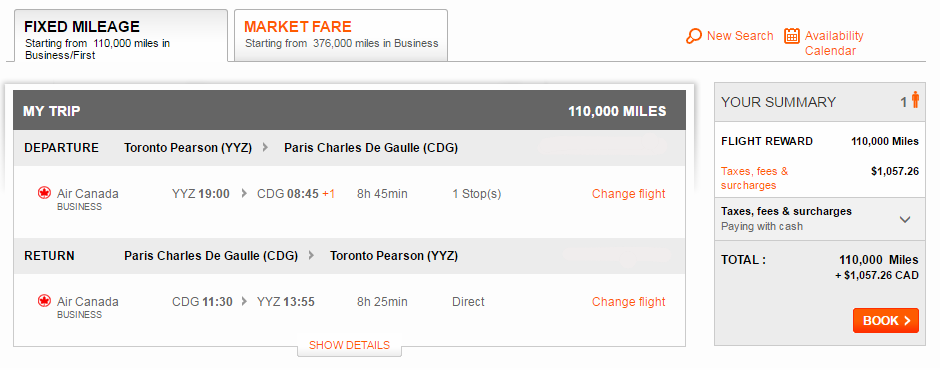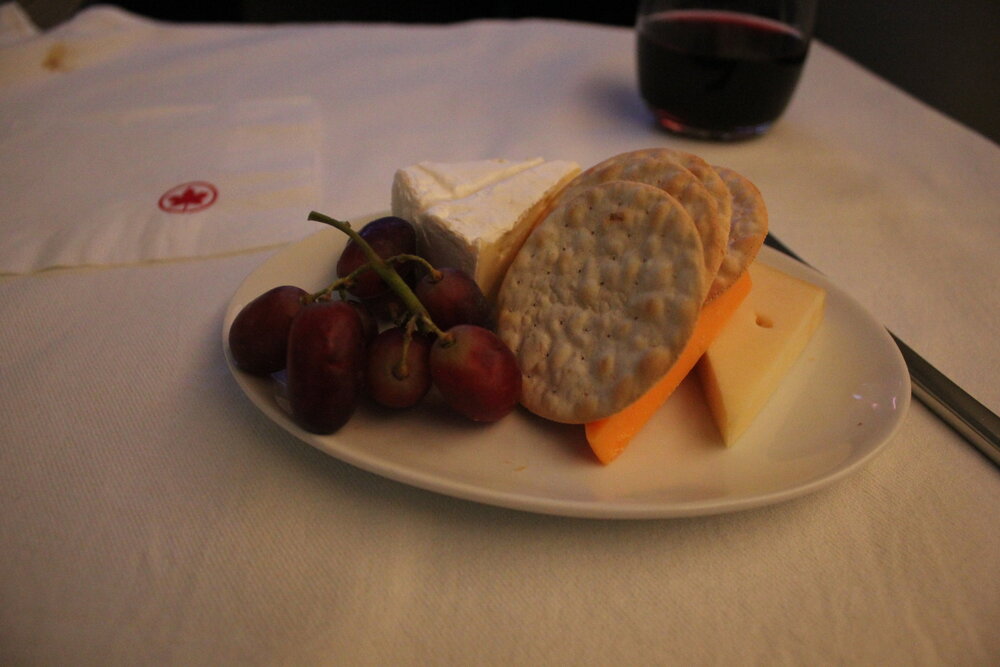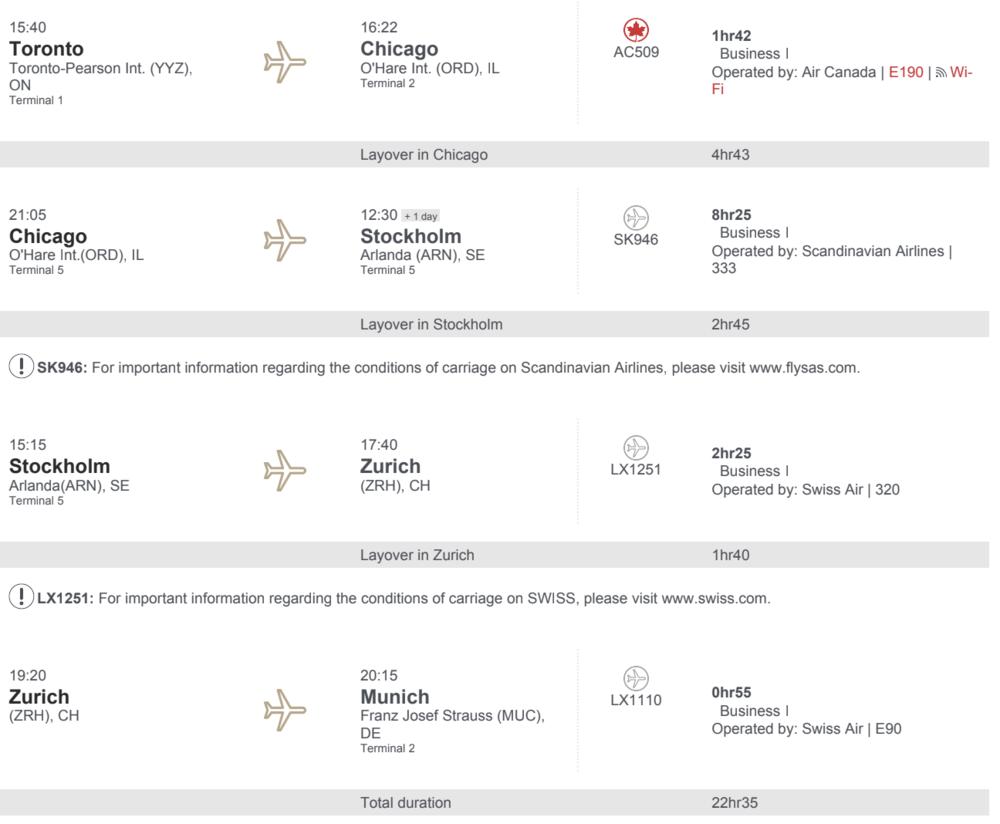Business Platinum Card from American Express
130,000 MR points
My friend Jayce from PointsNerd recently posted an article about weighing convenience and cost when booking award travel, and I couldn’t help but find myself nodding along in agreement as I was reading it.
Since I haven’t really addressed this topic myself (it does relate somewhat to the value vs. enjoyment debate, but also has some room for discussion of its own), I’ll add some of my own thoughts here on the convenience vs. cost debate and whether it may be better to simply bite the bullet on surcharges every now and then.
Those of us who’ve taken the time to understand how loyalty programs work will know that fuel surcharges or carrier-imposed surcharges are simply one of the exogenous variables that we must deal with.
Within a given loyalty program, some airlines come with surcharges (such as Air Canada and Lufthansa when redeeming Aeroplan miles, Hainan Airlines when redeeming Alaska miles, and British Airways when redeeming just about any type of miles) and others don’t, and that’s simply one out of many factors – like availability patterns, flight schedules, and airline quality – that we must take into account when deciding how to redeem miles.

But if we put aside our expert lenses for a second and think about it from the Average Joe’s perspective, it’s easy to see how fuel surcharges can be such a major stumbling block to getting value out of one’s miles.
The average user thinks of their rewards points as something that should duly reward them, by giving them the “free flights” that they really want. So when a direct business class flight on Air Canada to Europe is slapped with $1,000 in surcharges, that feels like a slap in the face, and a particularly hard-hitting one at that.
(And to those who were expecting a “free flight”, the fact that this amount still represents a huge discount compared to the regular business class fare is scant consolation.)
“Aeroplan miles are a useless scam. I tried using them for a trip to Europe and had to pay $700 in fees. I may as well just buy a ticket next time.” How many times have you heard that one?
Now, this is where I direct people to the idea that you don’t need to follow what the search engine gives you and that you can call Aeroplan to piece together your own flights on Star Alliance partners that don’t levy hefty surcharges. “Instead of flying Vancouver–London direct,” I might say, “You could fly Vancouver–Montreal–Zurich–London on Swiss or Vancouver–Toronto–Lisbon–London on TAP Air Portugal and pay only a fraction of the fees!”
And yet, while the circuitous routing may indeed reduce your fees by several hundreds of dollars, the counterpoint to this is that in doing so, you are sacrificing a great deal of convenience and burdening yourself with a far longer travel time on your way to the destination. And you know what they say about time…
As Jayce touches upon in his article, it’s definitely true that a desire to save money and maximize one’s gain within a limited budget is what attracts a large number of people to the world of Miles & Points.
I myself was the same way – it was as a student, with travel aspirations far surpassing my limited income, that I first started dabbling with points and credit cards all those years ago.
And when you have ample time on your hands but limited access to funds, you tend not to see time for what it truly is: the most valuable currency we have.

For my entrepreneurially-minded readers, “time is money” is very much gospel, but even if you’re simply embarking on a vacation from your regular day job, a more circuitous routing takes up valuable time that could otherwise be spent exploring your destination or getting proper rest before returning to work.
Many of us, myself included, have become quite skilled in the art of rationalizing away these decisions to trade time for money: “I’m saving hundreds of dollars compared to the direct option, and hey, I get to fly a few more business class flights and sip on more drinks in the lounge, perhaps even slot in a few long layovers to see a few extra places I wouldn’t otherwise get to see.”
Yes, it’s certainly true that the more effectively you can convince yourself to take on this unorthodox travel style, the more handsomely you will be rewarded by the game of Miles & Points (this is essentially the tenet of “flexibility is key” laid bare).
But it’s also important to question this line of thinking from time to time, and to ask yourself whether you’re maximizing the value of your points for you, even if that might require paying some surcharges, or whether you’re going out of your way to do stuff that don’t quite fit your preferences simply to save money?

After all, mid-range in-flight and in-lounge champagne feels great up to a certain limit, after which it makes an already long journey even more taxing on the body.
Furthermore, your circadian rhythms don’t care about luxury – those red-eye flights from the East Coast to Europe are a gruelling experience in any class of service, and the short intra-Europe flights immediately after that can often be even more nightmarishly exhausting.
And lastly, as much as we like to say in these circles that “it’s about the journey, not the destination,” it’s ultimately a huge privilege to even have a preference between the two in the first place – the vast majority of travellers out there dream mainly of seeing the world, and the journey is only the means to that end.
Only you can decide how much time and energy is worth trading away by booking a circuitous routing compared to the fuel surcharges you’d save. There are quite a few factors you’ll need to consider:
How much is the surcharge? Travellers who like going to Asia and Australia are quite fortunate that the surcharges on Air Canada flights to these destinations are often not too bad at all, thanks to the large number of countries with fuel surcharge regulations in these regions; even if a journey isn’t subject to these regulations, the surcharge typically caps out at about $500 round-trip.
It’s really the Air Canada (or Lufthansa and Austrian) flights to Europe or South America that come with the heftiest surcharges, nearing $1,000 per person for a round-trip.
What’s the total additional travel time? If you’re headed from the East Coast to Europe, it shouldn’t be too much trouble to swing through a different East Coast city to catch a Swiss or TAP Air Portugal flight on your way to Europe, and the savings are usually worthwhile.
But if you’re flying from Vancouver, then the initial flight down to San Francisco or LAX (if you’re lucky) or an East Coast city (more likely) can add a significant amount of travel time, especially if your flight doesn’t immediately connect onto the departing transatlantic flight. The Vancouver–London direct flight takes nine hours; a circuitous routing on Swiss or TAP could take an entire day, and that’s a huge difference.
Do you enjoy flying? Seriously, do you derive a true sense of blissfulness from being on a plane and the entire experience associated with it, or is it a source of boredom or frustration for you? I consider myself lucky to be able to answer an emphatic “yes” to this question – but keep in mind that, even so, I still find myself naturally exhausted and cranky at the tail end of a Toronto–Chicago–Stockholm–Zurich–Munich routing.

Does the idea of a 24-hour layover somewhere make you feel excited, or exhausted? Often, limited airline availability means that you’re forced to have a long layover somewhere, so the conventional thinking is that you may as well make the most of it and make it as close to a 24-hour stay as possible.
Some travellers light up at the idea of getting a quick opportunity to discover someplace new or revisit an old favourite, however briefly, since 24 hours in a certain place is always better than zero hours there. Others shudder at the thought. Which camp do you fall in?
How much extra time would you have to put in to finding and booking the circuitous routing? Those of you who’ve done this yourself will know that it’s no easy task, and can take at least five to 10 hours to figure out at first, compared to clicking a few buttons on the Aeroplan website to book the direct flight.
That’s not to mention the many hours of waiting on hold for an agent who can help you piece together itineraries, thanks to Aeroplan’s recent issues with the Amadeus migration. How much do you value your free time, and could that time alone justify biting the bullet and paying the surcharges?

Do you enjoy the process of optimizing a routing to your exact liking, or do you find it burdensome? If you enjoy it, then however many hours you must spend doesn’t feel like it’s costing you your free time, since you’re just spending your free time in a way that’s fun for you. Otherwise, if you find it burdensome, then you may wish to skip the work and bite the bullet on the direct option – or consider booking a Points Consulting session for some help from an expert who very much relishes the process!
Finally, can you make friends with someone who has Air Canada Super Elite status? This’ll make the decision very easy, since you can always ask for a favour to benefit from the Super Elite fuel surcharge waiver on Air Canada flights. 😉
If I were to comment broadly, I’d say that Canadians living in Toronto or Montreal should find it relatively easy to book with Star Alliance carriers on alternative routes without making their journey too long.
But if you live in a place like Vancouver or Calgary, then the direct Air Canada service to London or Frankfurt could definitely be appealing compared to a two-stop journey through the East Coast and somewhere else in Europe that could take you almost three times as long. (The soon-to-be-launched Turkish Airlines flight from Vancouver to Istanbul might be helpful too, although it remains to be seen what the availability pattern looks like there.)
Personally, while I do very much enjoy flying as well as the process of optimizing a routing, I can’t deny that my priority has shifted more towards the convenience side of the equation in recent years, and have become more willing to spend the occasional chunk of change on fuel surcharges or a change fee. A busy work and travel schedule means that I’m looking to maximize every moment either settling into a new destination, catching up on work, or sleeping – and all of those are better done on the ground than in the air.
We often go to great lengths to avoid fuel surcharges when redeeming our Miles & Points, but at some point it’s worth questioning whether those lengths still make sense if you’re enduring a much longer journey – which does inevitably get exhausting, even in business class – purely to save a few hundred dollars.
The next time you’re planning out a trip on points, take a moment to consider the value of your time and think about whether a more direct option might be worth biting the bullet and paying the surcharges; after all, you’d still be scoring an unbelievable discount compared to the usual cost of a business class flight.
How does the Super Elite perk work? I thought it was not transferable.
Mia
Super Elites can book surcharge-free tickets out of their account in anyone’s name.
I’ve often wondered how you manage to do some of the itineraries you do. They sound exhausting.
For me taking a plane is like taking a bus. Sure, J is a much nicer bus than Y but it’s still a bus. The exact reason I want J is because I think I will be fresher and ready to enjoy my vacation faster after a long flight. So it’s all about a lie flat seat and some elbow room for me. The fewer stops the better.
I feel that to begin to understand a large city one must spend a week there. A 12-18 hour stopover might be nice occasionally but lets not kid ourselves that it’s a visit. It’s a lunch date at best. Most layovers are just hanging around in an airport feeling tired.
I was thinking about the Super Elite perk recently but wasn’t sure how it would work exactly. Do you have to transfer the miles to them somehow, or are they able to book a flight for me with my own miles somehow?
The ticket will need to be booked out of their account under your name. Either pay them back with a different booking later on, or transfer your MR points to their Aeroplan account to get this done.
Other thing that comes into my consideration is if my partner that I’m travelling with also wants to do these long routes w/ <24h layovers. Or how many stops is too many? There definitely a compromise that you have to make when travelling with someone else that I might not have made if I was travelling alone. However, sometimes having a P2 actually brings you down to earth a bit and makes a trip much more reasonable and doable w/o burning yourself out.